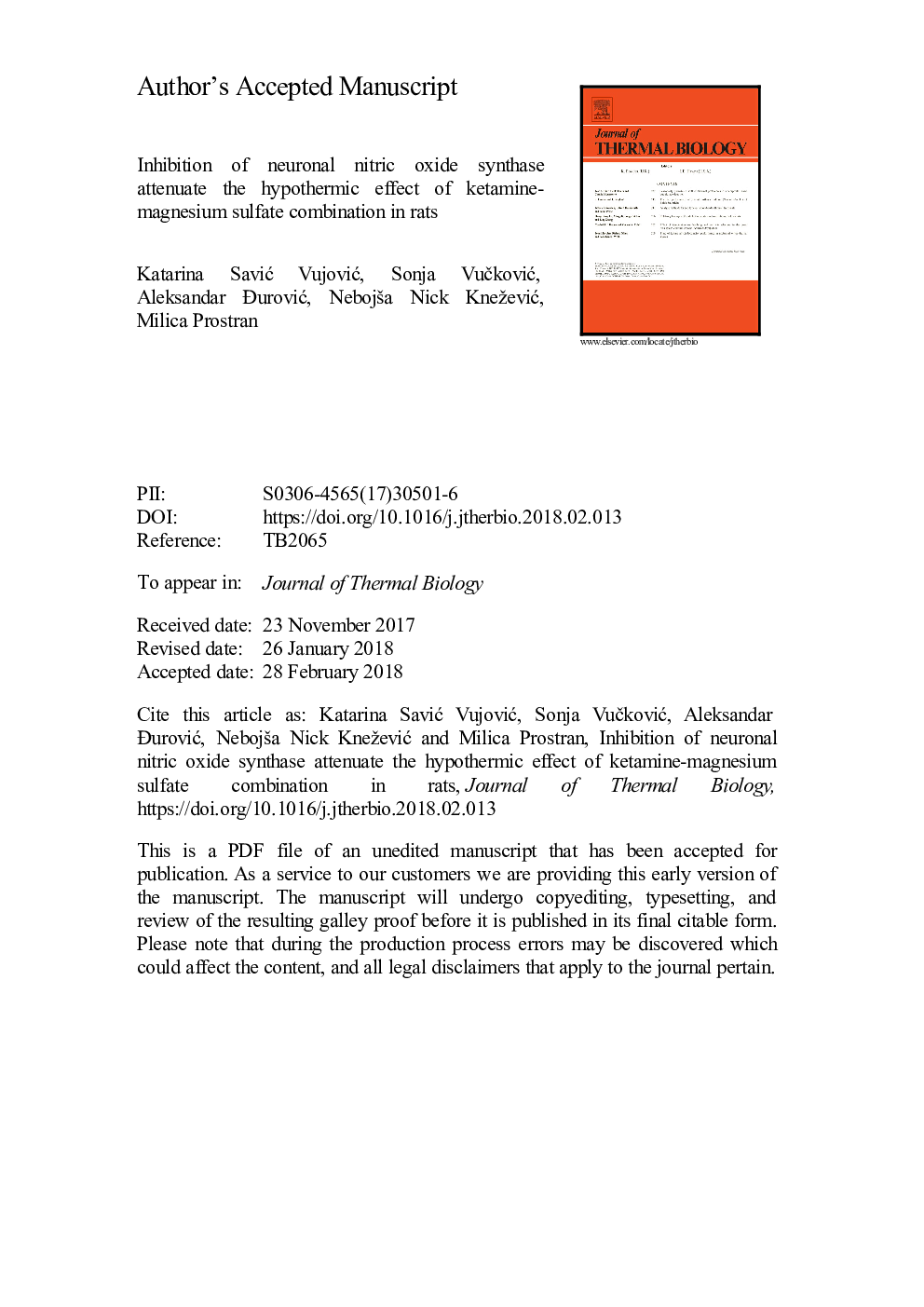| Article ID | Journal | Published Year | Pages | File Type |
|---|---|---|---|---|
| 8649989 | Journal of Thermal Biology | 2018 | 17 Pages |
Abstract
Ketamine and magnesium as NMDA receptor antagonists interact synergistically to decrease body temperature in rats. The mechanism of the hypothermic effect of the ketamine-magnesium sulfate combination has not been studied until now. The aim of this study was to examine whether nitric oxide (NO) has a role in the hypothermic effect of ketamine (10â¯mg/kg) and the combination of ketamine (5â¯mg/kg) and magnesium sulfate (5â¯mg/kg). The body temperature was measured by insertion of a thermometer probe 5â¯cm into the colon of unrestrained male Wistar rats (200-250â¯g). N(Ï)-nitro-L-arginine methyl ester (L-NAME 2.5 and 5â¯mg/kg) as non-selective inhibitor of nitric oxide synthase at a dose of 5â¯mg/kg antagonized the effect of the ketamine-magnesium sulfate combination at 60â¯min (pâ¯<â¯0.05) and 90â¯min (pâ¯<â¯0.01). Ketamine induced hypothermia was not affected by administrating of L-NAME (2.5 and 5â¯mg/kg). Inhibitor of inducible nitric oxide synthase N6-(1-Iminoethyl)-L-lysine hydrochloride (L-NIL 1.25â¯mg/kg and 2.5â¯mg/kg, sc) did not significantly change the hypothermic response evoked by the ketamine-magnesium sulfate combination. Inhibitor of neuronal nitric oxide synthase N-Ï-Propyl-L-arginine hydrochloride (L-NPA) at a dose of 2â¯mg/kg antagonized the combination at 60â¯min when it achieved the maximum effect. The NO pathway is not involved in the hypothermic effect of ketamine. Production of NO through neuronal NO synthase, might play a role in the mechanism of the hypothermic effect of the ketamine-magnesium sulfate combination.
Related Topics
Life Sciences
Agricultural and Biological Sciences
Agricultural and Biological Sciences (General)
Authors
Katarina SaviÄ VujoviÄ, Sonja VuÄkoviÄ, Aleksandar ÄuroviÄ, NebojÅ¡a Nick KneževiÄ, Milica Prostran,
